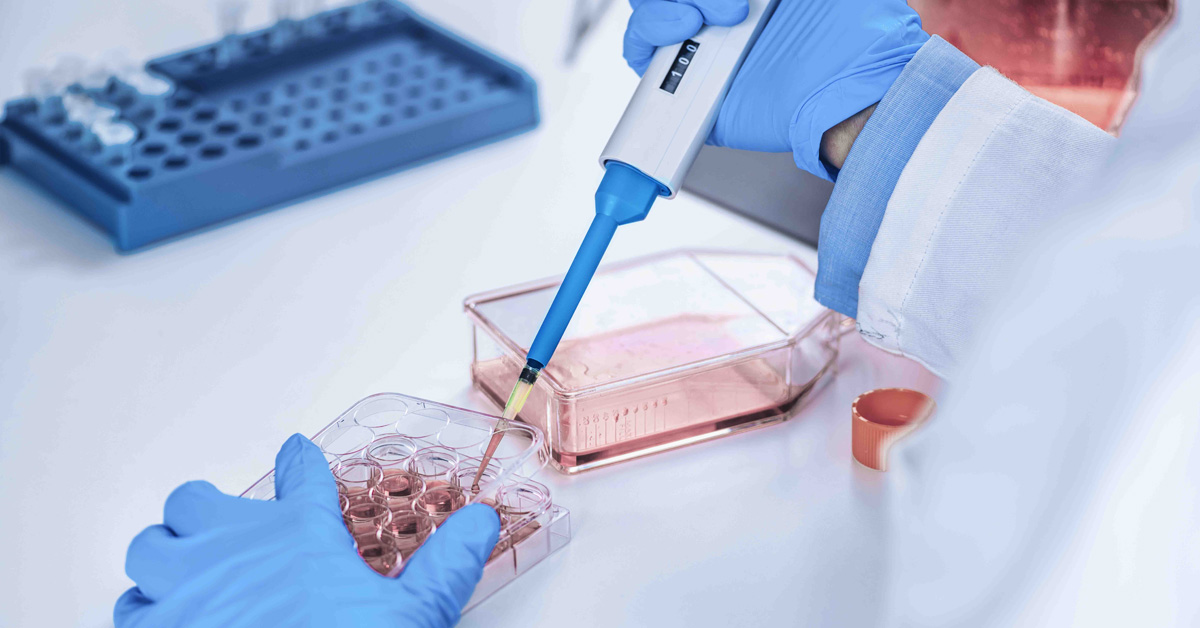For academic labs and pharmaceutical companies alike, customizing cell culture media early can help reap important benefits.
The most critical factor for a successful cellular therapeutic is the cell line. The second most critical factor is the culture media supporting that cell line. Without high-quality cell culture media, you will never have the best quality product.
When your cell therapy is still in early development, testing multiple iterations of custom-designed culture media is probably pretty far down on the “to-do” list. Surely that level of detail is best left for clinical candidates, right? Except maybe it isn’t. Researchers don’t always recognize just how important their growth media is– and why moving media formulation up the to-do list can help your company decide which candidate is the best fit for your program, and which could end up wasting precious time and resources.
Cell culture media caters to the basic needs of a particular cell type, providing salts to regulate pH and osmotic pressure, and nutrients for cell health and expansion. A custom media can do much more than that. Media components such as amino acids, vitamins, growth factors, cytokines, and chemokines all work together to ensure that your cell model works the way you need and expect.
Even single media components can significantly affect cell growth, surface marker expression, transfection efficiency, and other attributes that influence therapeutic efficacy. In 2016, the journal Cell published an article describing how L-arginine concentrations directly impact the metabolic fitness and survival capacity of T cells, and thus their ability to fight cancer[1]. Another study found that the inclusion of cytokine IL-21 in cell culture media during transfection significantly enhanced the lentiviral transfection efficiency of T cells[2]. The increased transfection efficiency led to enhanced CAR-T cell cytotoxicity against HER2 breast cancer cells in vitro.
The composition of cell culture media can also impact a cell’s protein secretion levels and capabilities[3]. Extracellular vesicles (EV), normally used for the secretion of bioactive molecules and intercellular communication, are often scrutinized by scientists in the course of their research because they contain diagnostic information and disease biomarkers. The presence of foreign EVs in growth serum raises the risk of altering or hampering intercellular signaling. This is just one of several reasons the use of serum in cellular therapeutics is problematic. Using serum-free, and/or xeno-free media mitigates this risk, allowing scientists to avoid lot-to-lot variability and define media composition more precisely.
The use of custom media early in process development does add expense in the short term, but it results in significant savings in time and resources long term. The further along in development a therapeutic candidate is, the more expensive it becomes in terms of dedicated research hours, raw material support, and company expectations. Irreproducible results are by far the most common reason for failed manufacturing runs or delays in drug candidate advancement. Making the switch from off-the-shelf media to custom media ensures optimal and reproducible functional potency.
At the same time, proprietary custom media formulations limit the scientist’s ability to chemically modify their media. It is difficult to optimize something when you don’t know what is in it. Proprietary formulations also introduce supply chain risk if there is a shortfall or delay in sourcing raw materials.
At Nucleus Biologics, media composition is transparent, and customers own their media formulation. Nucleus Biologics’ Formulation Services and digital platform NB-AIR™, an AI-guided media formulation platform, provide customers with peer-tested compounds and formula recommendations based on meta-analysis of published papers sorted by cell type and critical quality attributes. Scientists can choose to modify traditional media, or design their own formula based on the CQA they wish to emphasize with either the services or digital path. Custom formulations are securely stored online and can be ordered in lot sizes ranging from 100 mL-2000L. Finally, our GMP Services can take your formulation from the bench to your bioreactor. With in-house process development and full GMP manufacturing capabilities, we can help you scale your formulation to match your stage of development.
Accelerating cell and gene therapy development will require robust, consistent raw material sourcing, consistent therapeutic potency, and streamlined scale-up processes. While off-the-shelf cell culture media may fulfill the requirements for testing traditional medicines, cell and gene therapies are a living product capable of responding to the surrounding environment. Early cell culture media customization helps define and safeguard therapeutic efficacy. There is a well-known saying about product quality: “the process is the product”. Nowhere is that truer than in the cell and gene therapy industry.
Different cell types have very specific medium and supplement requirements. Custom media offers the best opportunity to streamline process development and embrace peak cellular performance. Please visit our website today to learn more about our custom media formulation services.
References
- Geiger R, Rieckmann JC, Wolf T, et al. L-Arginine Modulates T Cell Metabolism and Enhances Survival and Anti-tumor Activity. Cell. 2016;167(3):829-842.e13. doi:10.1016/j.cell.2016.09.031
- Du L, Nai Y, Shen M, et al. IL-21 Optimizes the CAR-T Cell Preparation Through Improving Lentivirus Mediated Transfection Efficiency of T Cells and Enhancing CAR-T Cell Cytotoxic Activities. Front Mol Biosci. 2021;8:675179. Published 2021 Jun 4. doi:10.3389/fmolb.2021.675179
- Hagmann S, Moradi B, Frank S, et al. Different culture media affect growth characteristics, surface marker distribution and chondrogenic differentiation of human bone marrow-derived mesenchymal stromal cells. BMC Musculoskelet Disord. 2013;14:223. Published 2013 Jul 30. doi:10.1186/1471-2474-14-223




